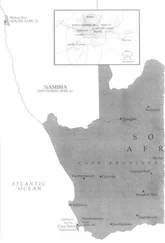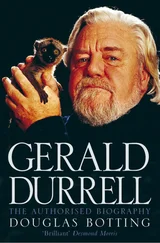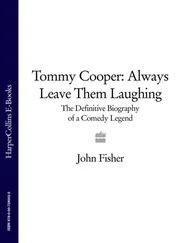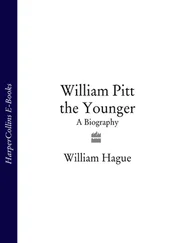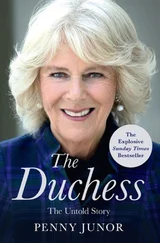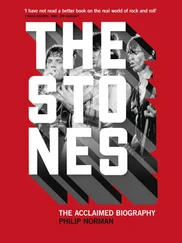In 1940 the ANC had elected a more effective President, Alfred Xuma, a small, busy doctor with a black American wife, who like Sisulu had begun as a herd-boy in Engcobo. He now lived in a comfortable house on the edge of Sophiatown, a multi-racial suburb of Johannesburg. Dr Xuma quickly pumped life into the moribund body. ‘There was no membership to boast about, no records, and the treasury was empty,’ as he described it. 50He toured the country, reviving the branches, and took personal control over the Transvaal, whose overflowing black population provided many new recruits. He brought a new unity to the Congress, breaking down its tribal divisions and abolishing the House of Chiefs. 51But it remained mainly middle-class and middle-aged, and while only Africans were admitted it had no popular following. Xuma was fussy about his dignity and proud of his respectable white friends, including government officials; and he dreaded the demagogy and militancy of the younger leaders who were now making themselves felt.
It was at Sisulu’s house in Orlando in 1943 that Mandela first met the fiery young Zulu activist Anton Lembede, then only twenty-nine, who had just given up teaching to work in the law firm of Dr Seme, the co-founder of the ANC. Lembede, the son of a farm labourer, was a devout Catholic who, appalled by the moral degradation of the townships, had resolved that blacks must mobilise themselves without relying on whites or Indians. He believed the British were systematically working ‘to discourage and eradicate all nationalistic tendencies among their alien subjects’ and to co-opt the young black elite, making them their instruments. It was a charge to which Mandela felt himself vulnerable. 52
Lembede had a strong populist touch: ‘A pair of boots,’ he said, ‘is worth all the works of Shakespeare.’ 53But he was also an intellectual, steeped in English literature (including Shakespeare) and inspired by such black American leaders as Marcus Garvey and W.E.B. du Bois. ‘My soul yearns for the glory of an Africa that is gone,’ Lembede said, ‘but I shall labour for the birth of a new Africa, free and great among the nations of the world.’ 54Mandela realised that Lembede was unscientific, verbose and sometimes irrelevant, but he admired the vigour of his rhetoric and his vision, which evoked past Xhosa heroes. 55
Lembede became the leader of a small group of young blacks, including Sisulu and Mandela, who wanted to form a Youth League within the ANC. Their aim was to press the organisation towards mass action of the kind which had been so successful in the Alexandra bus boycott. While they supported the ANC, they resented Xuma’s ‘heavy hand’. They also felt challenged by the new African Democratic Party under Paul Mosaka which had just broken away from the Congress and, as they saw it, could ‘prance around the country’. 56They were encouraged by the Anglo-American idealism of the war against Hitler, particularly by the apparent radicalism of the Atlantic Charter, which Churchill and Roosevelt had signed in August 1941; this committed the signatories to ‘respect the rights of all peoples to choose the form of government under which they will live’. Churchill soon afterwards began backtracking from the anti-colonial implications of the Charter, explaining to Leo Amery, the Secretary of State for India, that he did not mean the ‘peoples’ to include the natives of Nigeria or East Africa, let alone Arabs who might expel Jews from Palestine. 57But Mandela and his friends took the Charter at its face value and admired Churchill for it; while Smuts appeared to support its application to Africa, particularly after the Japanese victories in the Pacific at the end of 1941, when he feared that Japan might invade Africa with support from blacks. (There was some reason for Smuts’s fear: Walter Sisulu, among others, admired the Japanese as a successful coloured people, and declared himself ‘happy when South Africa was threatened by the Japanese’. 58) The ANC set up a committee under Professor Z.K. Matthews to interpret the Atlantic Charter. It produced a document called Africans’ Claims in South Africa, which reasserted the right of all peoples to choose their government: the acid test of the Charter, it said, was its application to the African continent. 59
Mandela was now, at twenty-five, committed to ANC politics, and in 1943 he joined a delegation led by Lembede to put the idea of the Youth League to Dr Xuma in the library of his Sophiatown house. It was a historic but spiky encounter. Mandela admired Xuma for having revived the ANC, and was impressed by his international friends like Tshekedi Khama of Bechuanaland, Hastings Banda of Nyasaland and King Sobhuza of Swaziland. 60But he disliked Xuma’s pompous English style, and his obsession with delegations and telegrams. Xuma, for his part, craved the support of young intellectuals, and was quite flattered by the visit of ‘my Kindergarten boys’, as he called them; but he warned them that the ANC was not ready for mass action. 61Mandela, Sisulu and others nevertheless pressed ahead with a provisional committee, working away on a manifesto in the dingy Congress office in the Rosenberg Arcade in downtown Johannesburg. 62
In April 1944 the Youth League was formally launched at the Bantu Men’s Social Centre in Johannesburg, with Lembede as President and Sisulu, Tambo and Mandela on the executive committee. The stirring manifesto opened with Lembede’s description of the difference between white and black perceptions:
The white man regards the Universe as a gigantic machine hurtling through time and space to its final destruction; individuals in it are but tiny organisms with private lives that lead to private deaths …
The African, on his side, regards the Universe as one composite whole; an organic entity, progressively driving towards greater harmony and unity whose individual parts exist merely as independent aspects of one whole …
The manifesto went on to reject any claim that the white man was helping to civilise the African, and to insist that the African ‘now elects to determine his future by his own efforts’. It endorsed the ANC, with some reservations, and promised the support of the new Youth League as ‘the brains-trust and power-house of the spirit of African nationalism’. ‘The hour of youth has struck,’ said a flyer issued by the provisional committee in September, which ended with the lines from Julius Caesar:
The fault … is not in our stars,
But in ourselves, that we are underlings. 63
This was the first time, Mandela reckoned, that the idea of African nationalism had been set out in a clear fashion. But the policies were still uncertain. Did they really aim to drive the white man into the sea, as the radicals claimed? Eventually a more moderate view prevailed, shared by Mandela: that other racial groups were in South Africa to stay, but white supremacy must be abandoned. 64
Another political organisation had also gained support from the convulsions of wartime. The Communist Party of South Africa, which Mandela first encountered at Wits, was now quite rapidly gaining popularity among Africans after twenty turbulent years. It had been formed in 1921, led by a small group of Jewish immigrants and British non-conformists, and operated under the strict rules of the Comintern in Moscow. South Africa, with its highly concentrated mining finance, interested many Marxist theorists, including Lenin, as a case-history of economic imperialism and monopoly capitalism; but on the ground many communist leaders became confused between class and race conflicts. At first the communists showed little interest in attracting black members or leaders: in 1922 they actually supported the all-white Labour Party in the mine strike, under the slogan ‘Unite for a white South Africa’. The communists broke with the white Labour Party when it joined a cynical coalition with the Afrikaner nationalist government two years later; but in 1926 the Party alienated many white members when it accepted the new Comintern doctrine of a ‘black republic’.
Читать дальше

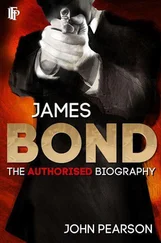
![Мик Уолл - Когда титаны ступали по Земле - биография Led Zeppelin[When Giants Walked the Earth - A Biography of Led Zeppelin]](/books/79443/mik-uoll-kogda-titany-stupali-po-zemle-biografiya-thumb.webp)
